The Long Lost Archives of New York’s Most Glamorous Hotel
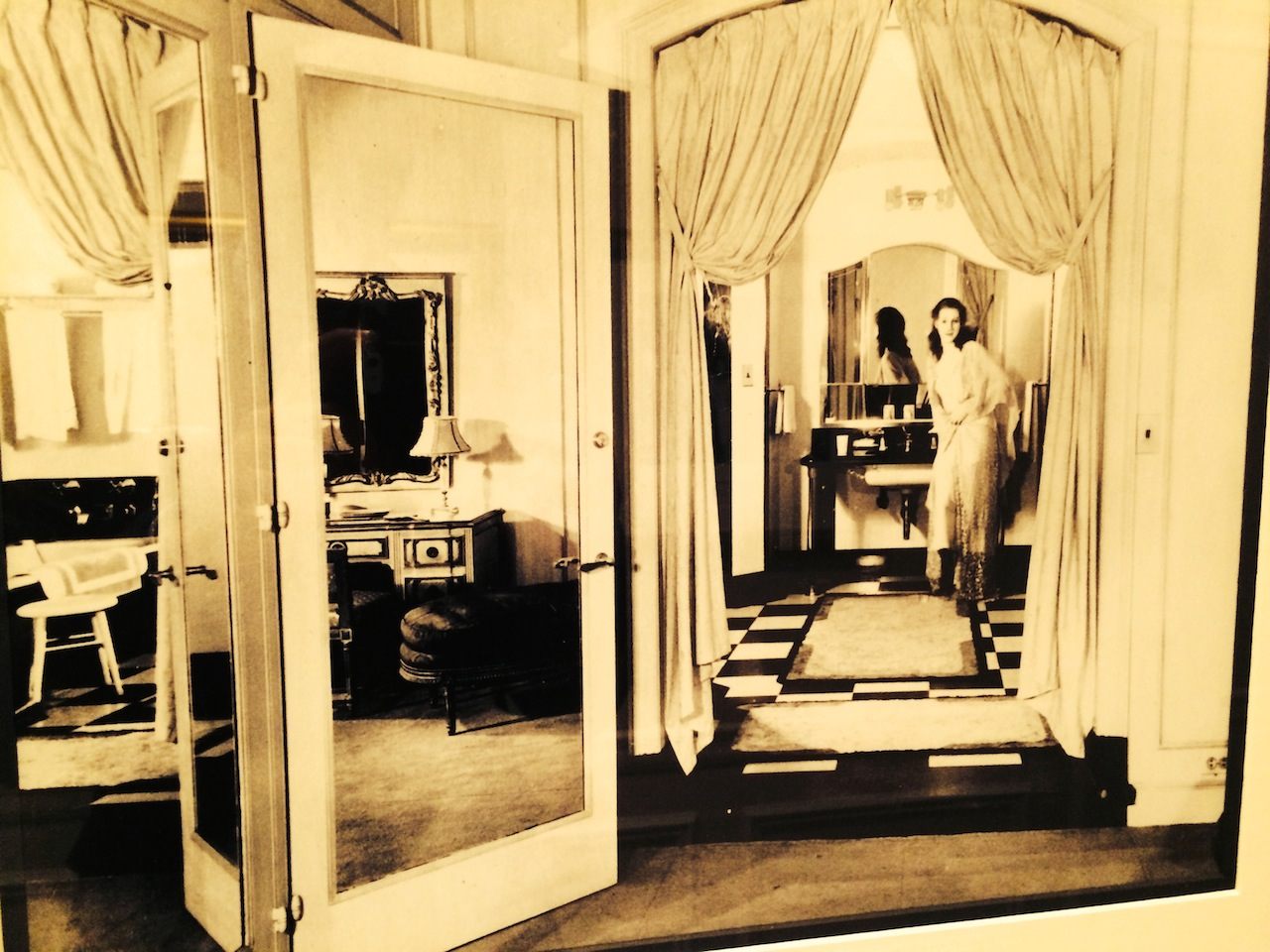 From the archives of the Waldorf Astoria (all photographs by the author)
From the archives of the Waldorf Astoria (all photographs by the author)
As one of the world’s greatest and most renowned luxury hotels, New York’s Waldorf Astoria has been a byword in glamor, opulence, and sophistication since it opened its original doors in the 1890s. It’s been host to royalty, the Hollywood elite, and every US President since Herbert Hoover; its chambers, ballrooms, and bars are as storied as they come. But a recent discovery sheds an intriguing light on the history of the grand hotel.
On the Lexington Avenue side of the building is the exclusive private Marco Polo club lounge. Next to it is the soon-to-be-closed, Kenneth’s hair parlor, the salon where Jacqueline Kennedy Onassis had her famous bob cut. During renovations to the hotel in the 1990s, something extraordinary was found hidden in the walls between the club and the salon. No one knows exactly who put it there or why, but buried away was a secret treasure trove: the forgotten archives of the Waldorf Astoria.
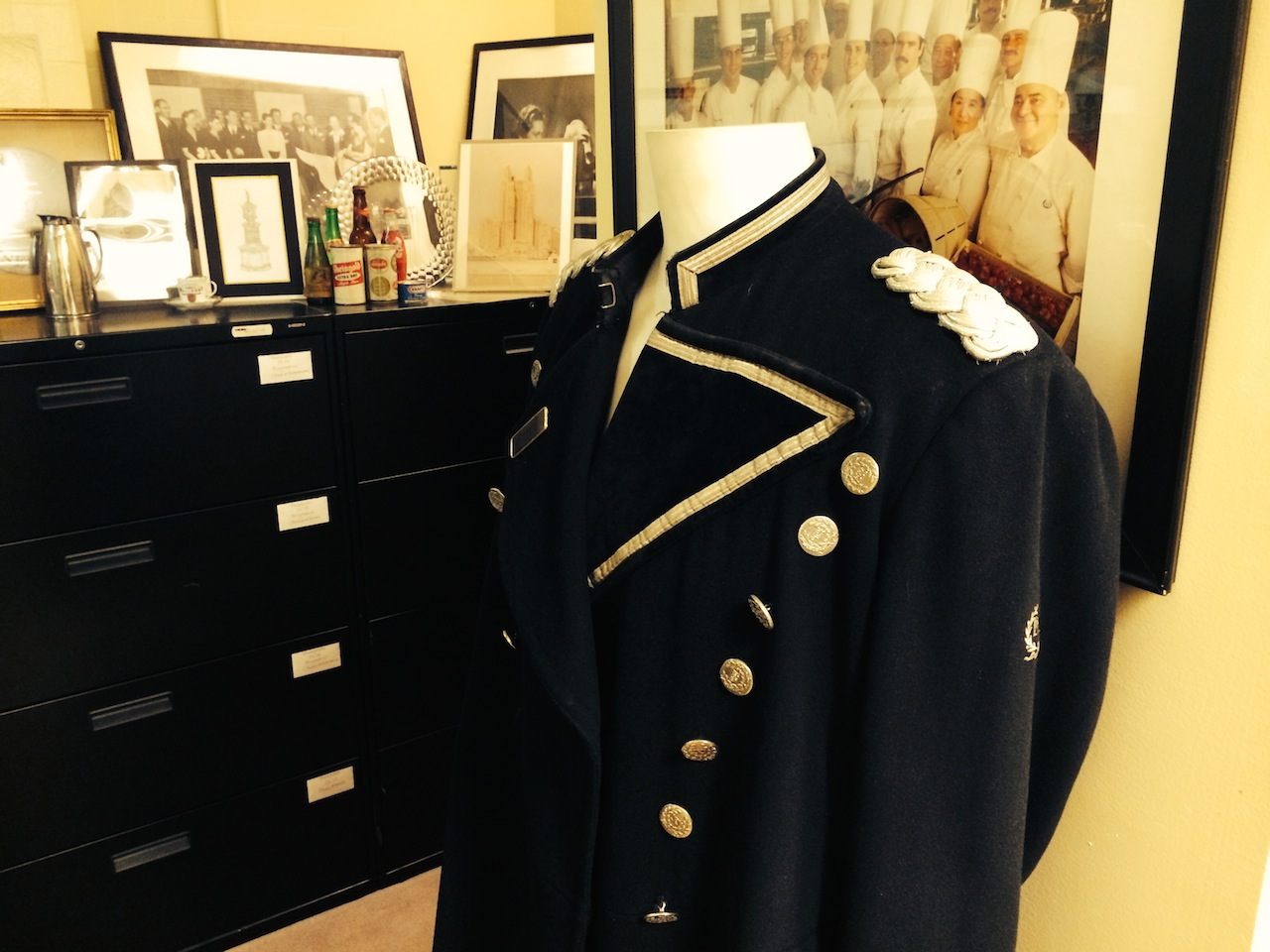

Comprising vintage postcards, menus, cocktail lists, ledgers, photographs, and bellhop uniforms, the archive gives remarkable insight into this most glittering of institutions. For anyone interested in the forgotten glamor of old New York, it’s an incredible find. I spent an afternoon being shown round the collection for Atlas Obscura, by the hotels own resident archivist.

Today, the physical archive lives in a bespoke office in the hotel. Excellently curated and maintained by Erin Allsop, a graduate of Brooklyn College’s archival studies program and current graduate student of library and information science at Queen’s College, the archive’s mission is to collect, preserve, and organize this fascinating collection of artifacts, and most importantly, make it available to everyone. Piece by piece, the archive is making its way online. Whether you would like to look up photographs of Herbert Hoover dining in the Empire Room, or what a cocktail menu from the Bull and Bear bar looked like in 1960, the collection is there to be explored.
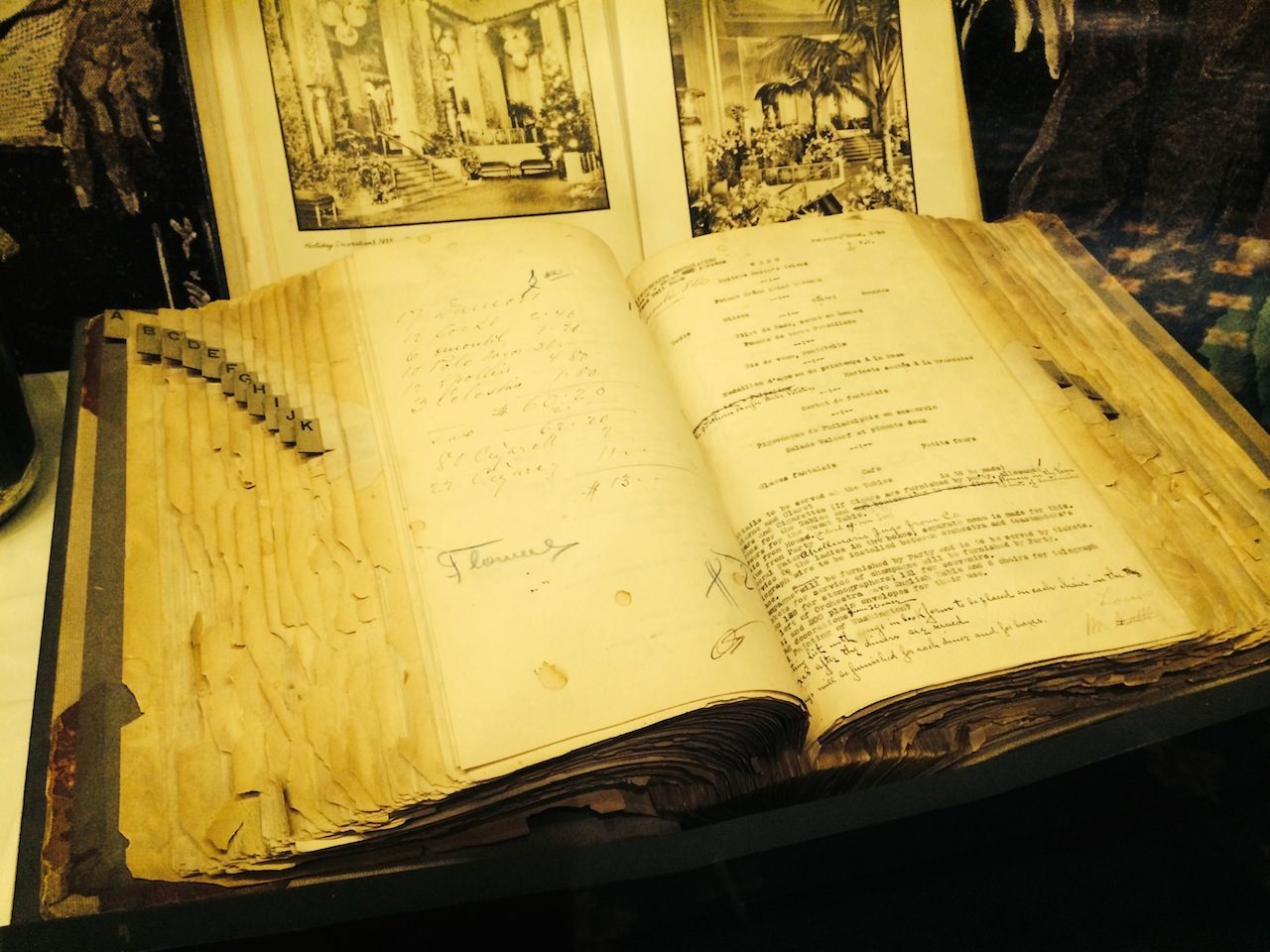
For hotel archivist Allsop, her aim is to bring this treasure trove to the public. She said that “outreach and advocacy is a big portion of archiving — letting people know it exists and is searchable.” The Waldorf Astoria actually started as two rival hotels, built on the location of what is now the Empire State building. Two feuding cousins of the venerable Astor family — William Waldorf Astor of the Waldorf Hotel (1893) and John Jacob Astor of the Astoria Hotel (1897) — tried to outdo the each other in building a luxury hotel that would block the other’s view of Fifth Avenue. The quarreling cousins eventually set aside their differences, and hotel proprietor George Boldt convinced them to join the two hotels with a 300-foot marble corridor. The only condition was that it could be locked from either end in case the feuding resumed.
Called Peacock Alley by the press, it was Manhattan’s most prestigious walkway, a place for the wealthy ladies of the Gilded Age to promenade and be seen, and lives on today as the hyphen in the hotel’s name. The need to modernize the hotel saw it move to its current location on prestigious Park Avenue in 1931. At the time of its completion, it was the world’s largest hotel, leading future owner Conrad Hilton to call it, “the greatest of them all.”
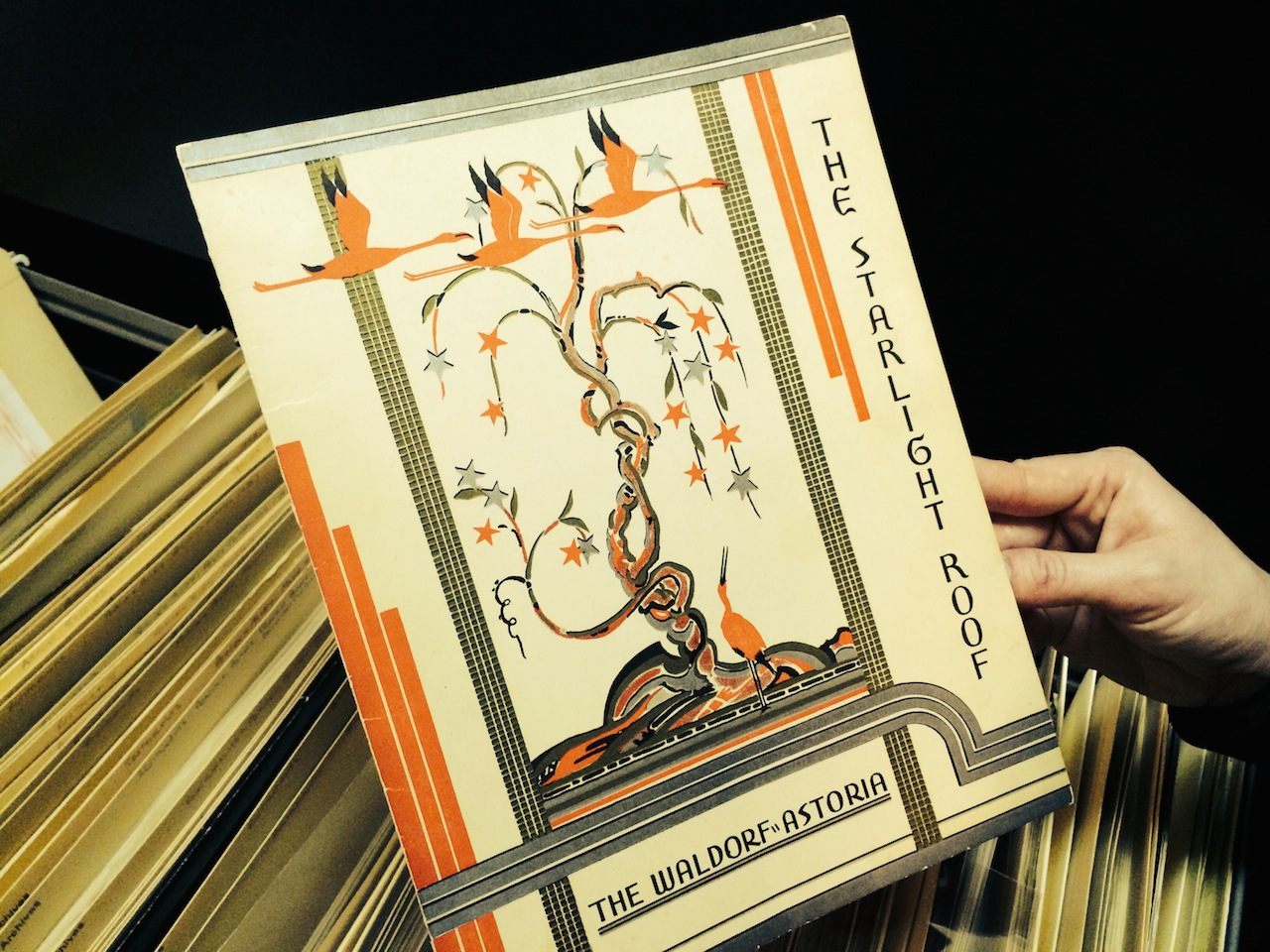
One of my favorite components of the archive is the collection of old menus and drinks lists. Impeccably illustrated in the Art Deco style, they give a flavor of what the well-heeled patrons of the Jazz Age were enjoying in between dancing at the Empire Room and Starlight Roof. The Starlight was one of the city’s premiere magnets for socialites. Its roof could retract on warm summer evenings, giving the elegant dining room its fanciful name. Whilst dining on “bisque of crab, Newburg” (30 cents) at the low end of the menu, or ”braised larded fricandeau of veal” at $3.50, the menus are full of delights that have long since been consigned to history. With live music performed by the likes of Count Basie, Frank Sinatra, and Ella Fitzgerald, a more glamorous evening is hard to imagine.

The archive is also home to filing cabinets full of as-yet-unpublished photographs. Snapped by the hotel staff photographer, its a star-studded line up of guests and visitors. They include Cole Porter (who lived in the Towers from 1934 until his death in 1964, and whose piano is in the modern day Peacock Alley), Dorothy Lamour, the Duke and Duchess of Windsor, and, most delightfully “Bob Hope and his Gang.” If perhaps one photograph in the archive can represent the importance of the Waldorf-Astoria in American society. It’s of a group shot taken at a dinner held the night before the hotel opened its doors to the public on September 30th, 1930. It’s a formidable line up of Henry Firestone (tires), Thomas Edison, Sir Thomas Lipton (tea), Charles Schwab, Henry Ford, Walter Chrysler, George Eastman (Kodak), and Thomas Wilson (sporting goods).
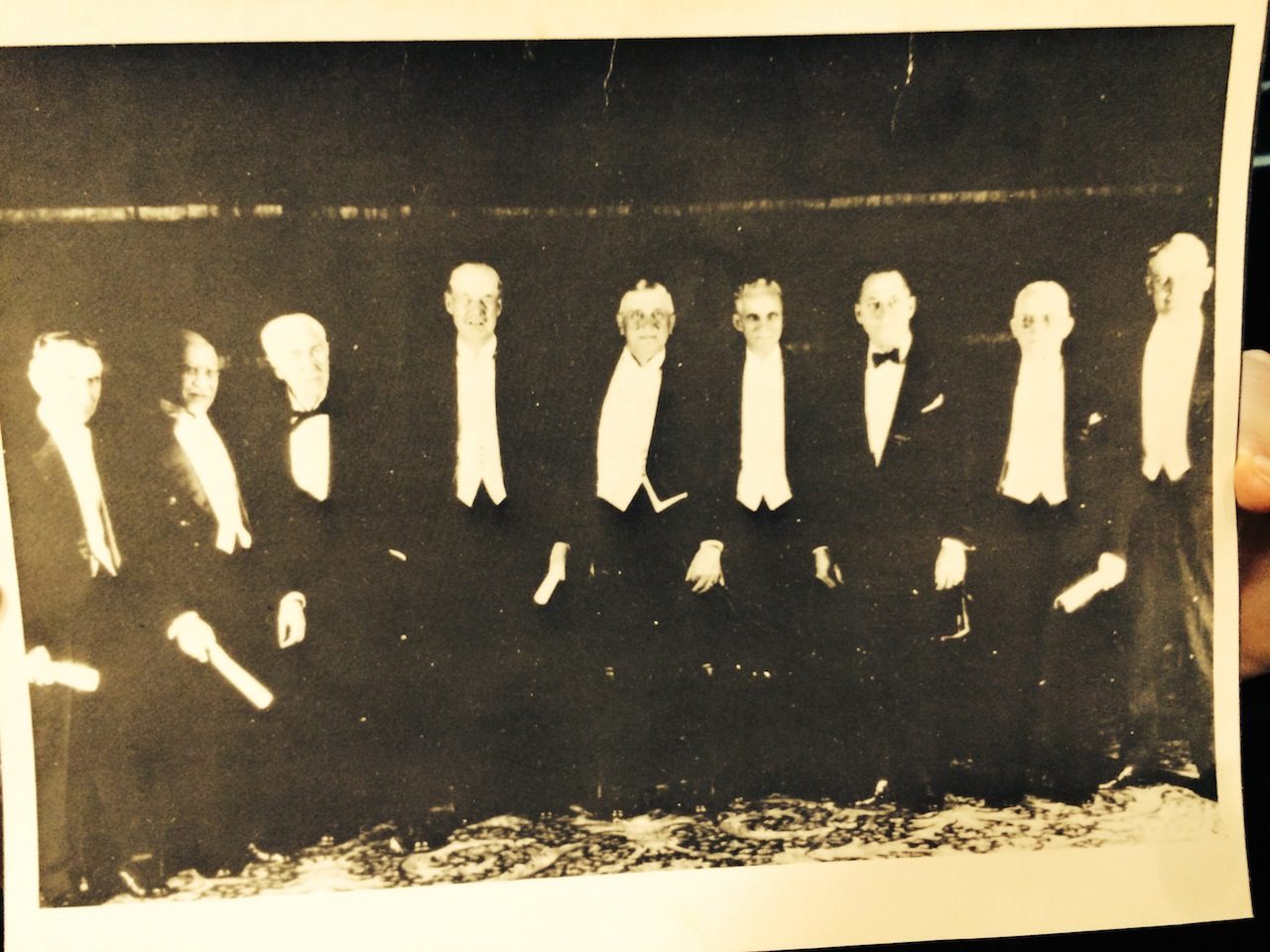
One of the most remarkable items in the archive is the private photo album of the Thompson-Starrett Company, the firm that built the hotel. The photos show the construction of the hotel from the ground up, starting with recording the moving of the Grand Central substation that was originally on the Park Avenue site. The first photograph in the album shows the group of young architects, crisp white shirts rolled up to the sleeves, responsible for building one of the world’s great hotels.
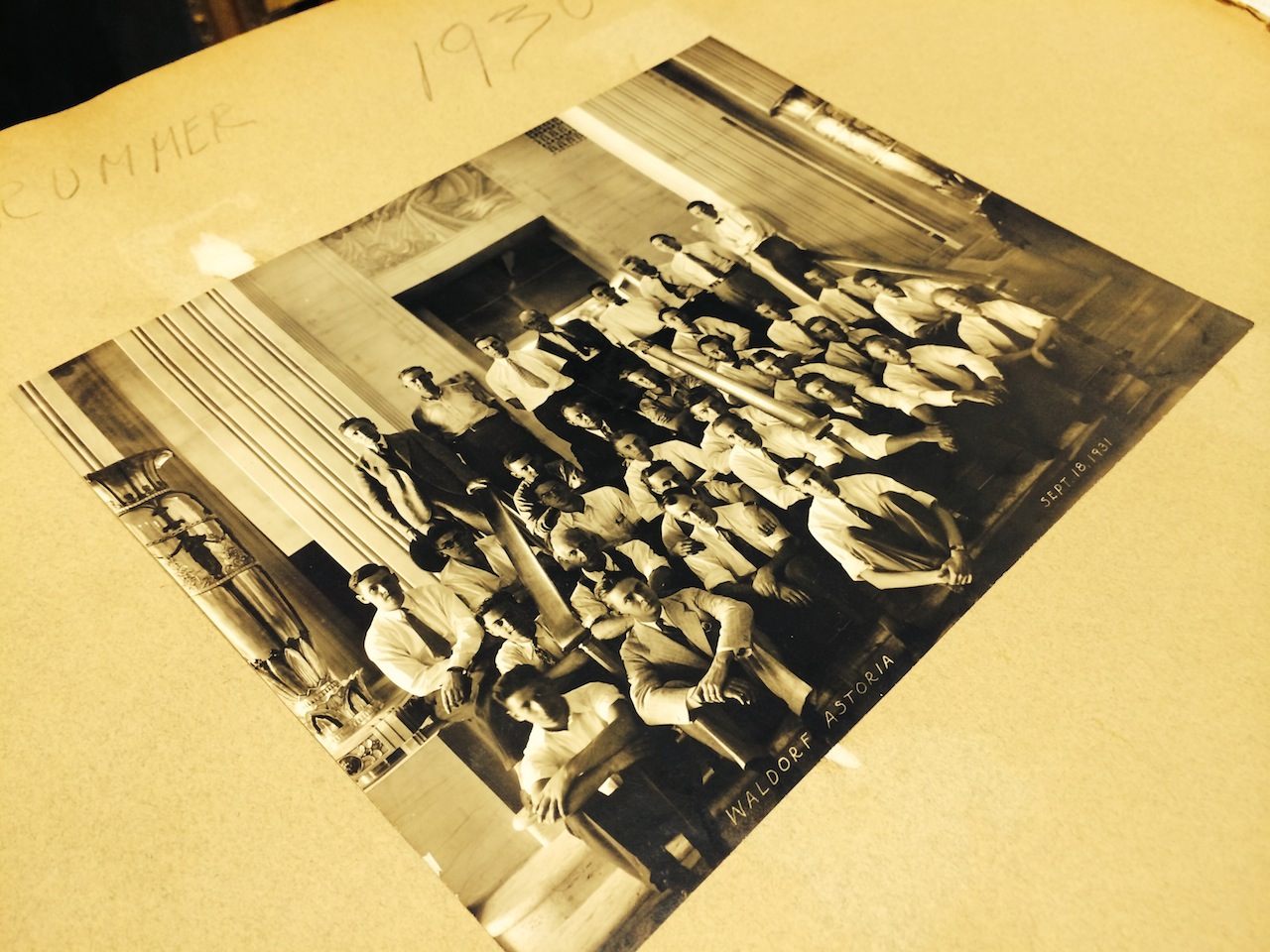
As well as the ongoing digital archive, physical displays in the hotel lobby show off some of the huge collection of ledgers, old keys, and silverware. An amnesty program was started in 2012 for people who’d pilfered robes, porcelain, and towels, and among some of the items sent back to the Waldorf was a silver ice bucket found in an attic from the original 19th-century hotel.
Today the hotel is as lively ever, and walking into the bustling Art Deco lobby is like stepping back in time to the 1930s. The collection with its thousands of artifacts tells the story of the day-to-day operation of one of the world’s grandest hotels, and which was hidden for so long in the wall behind where Jackie O once had her hair set, is a little-known gem in New York City.
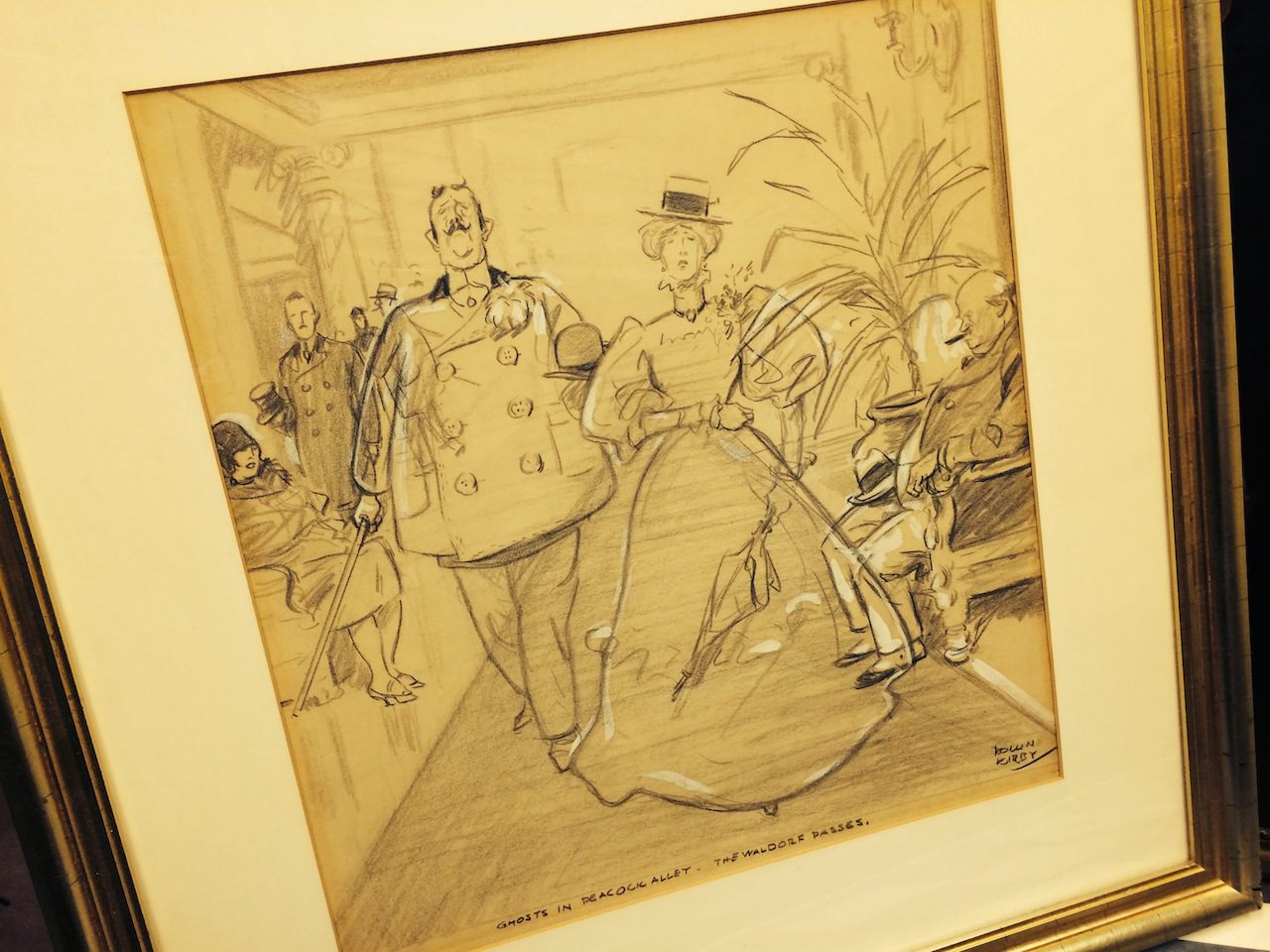
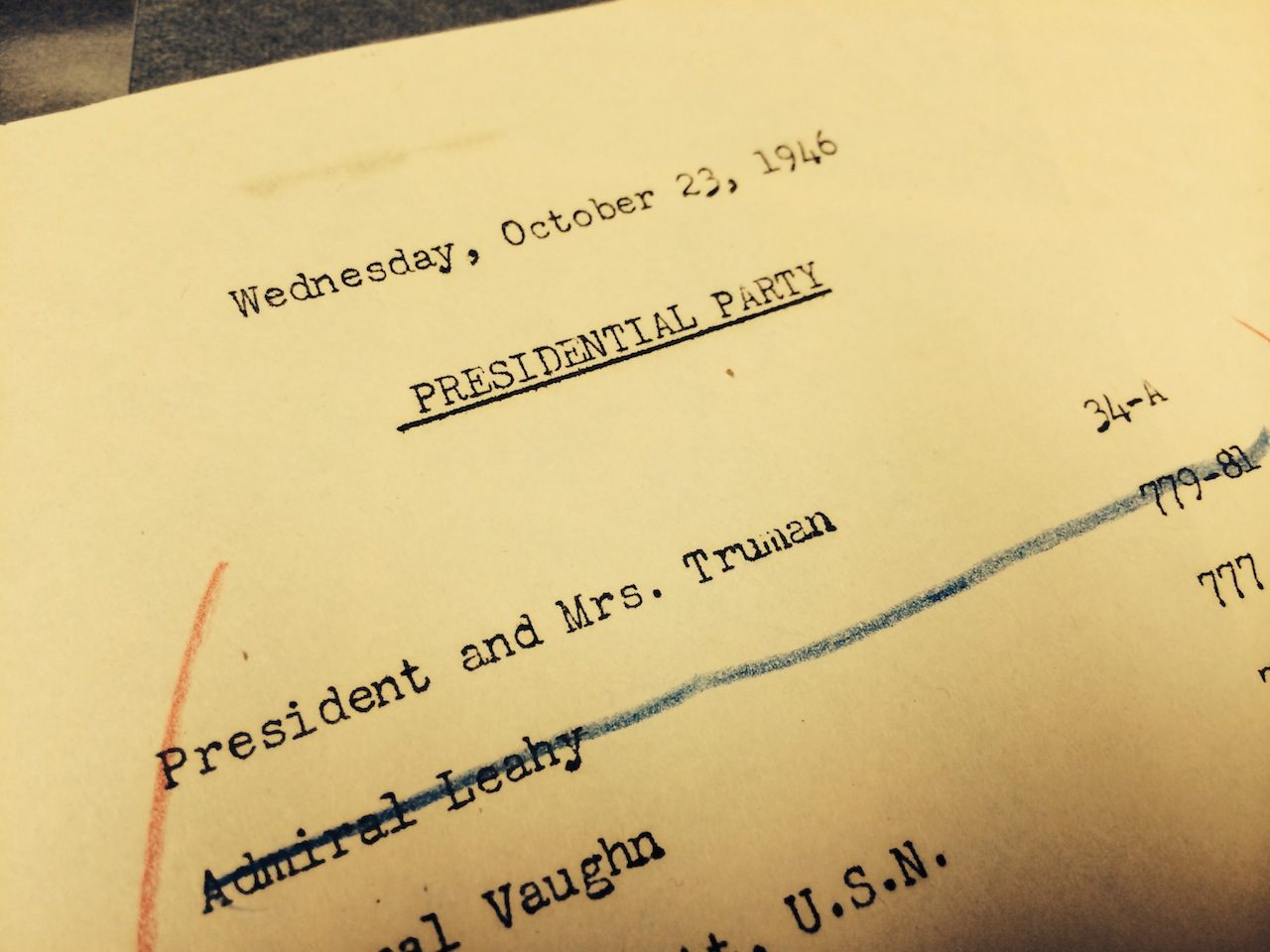
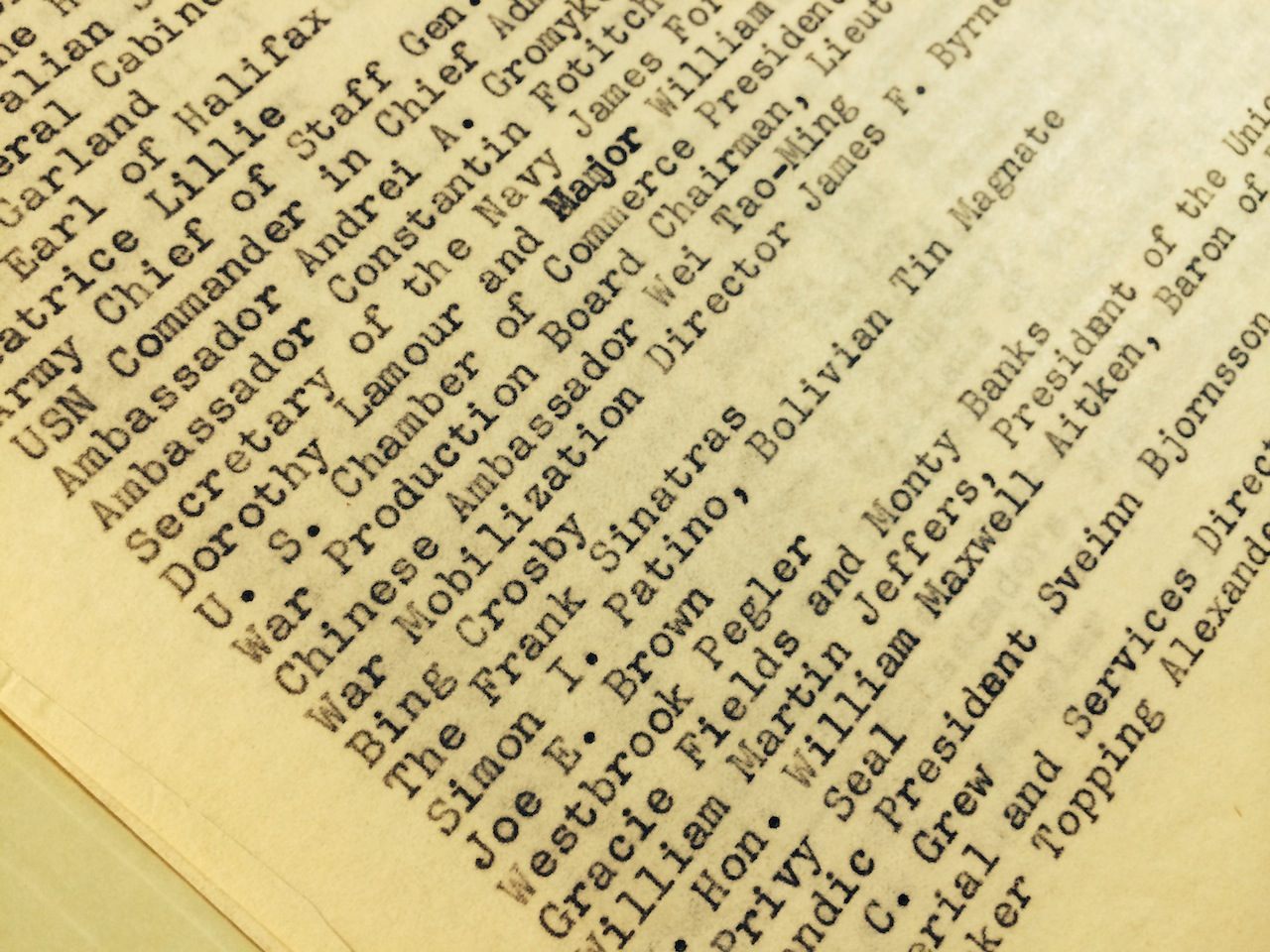

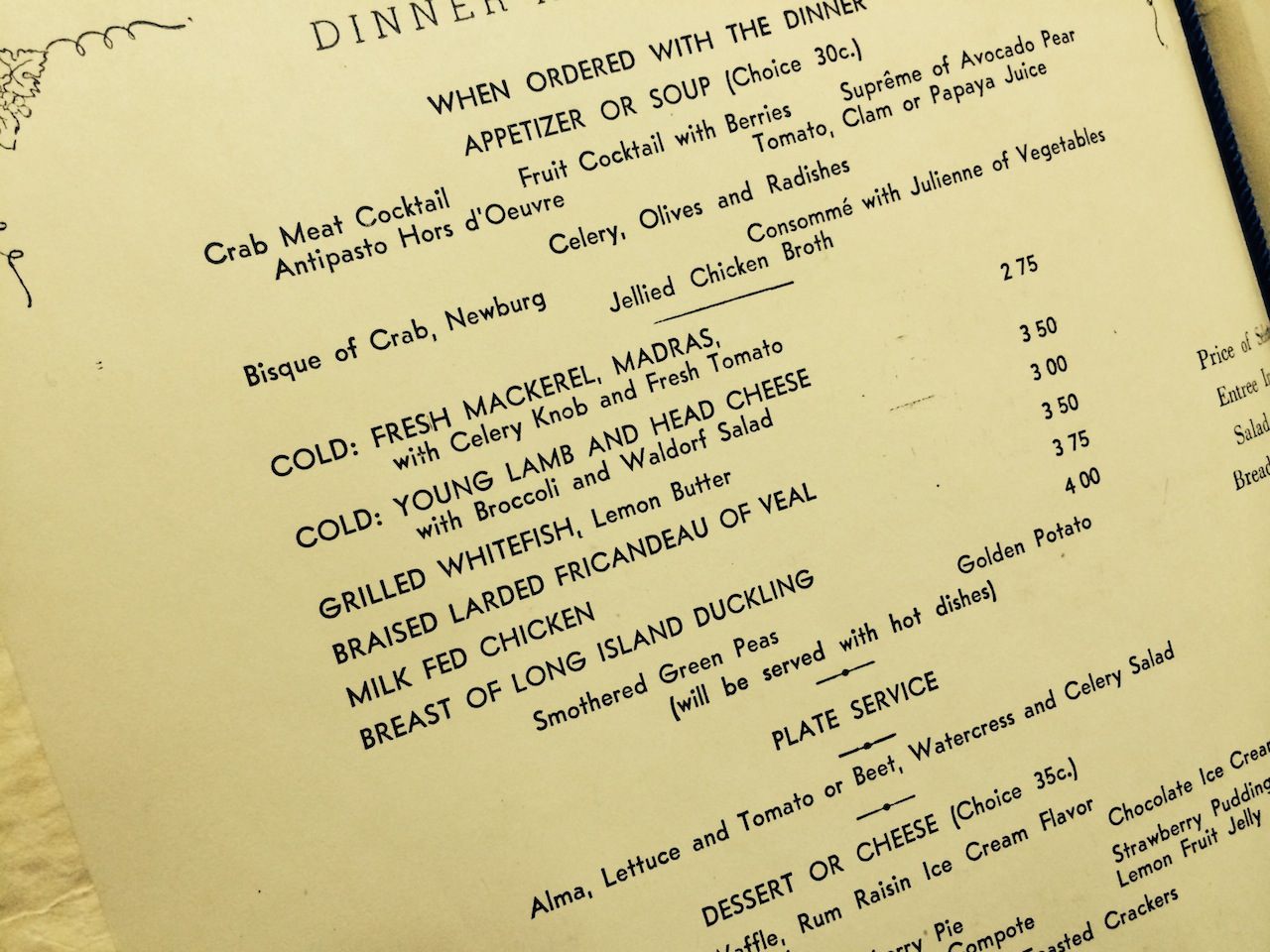

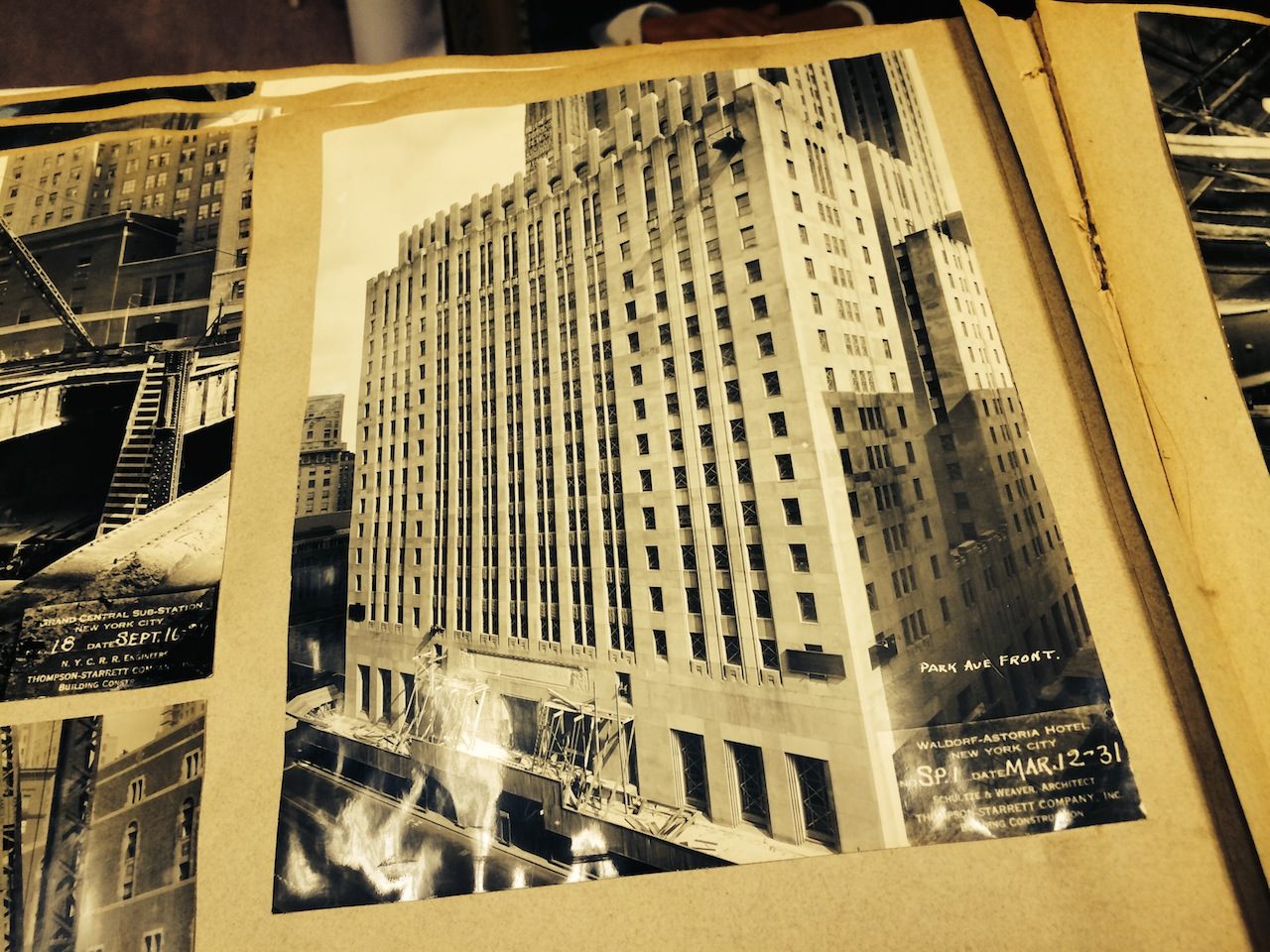










Follow us on Twitter to get the latest on the world's hidden wonders.
Like us on Facebook to get the latest on the world's hidden wonders.
Follow us on Twitter Like us on Facebook